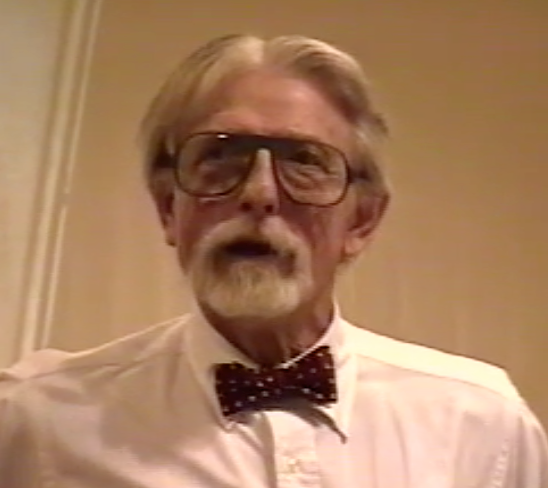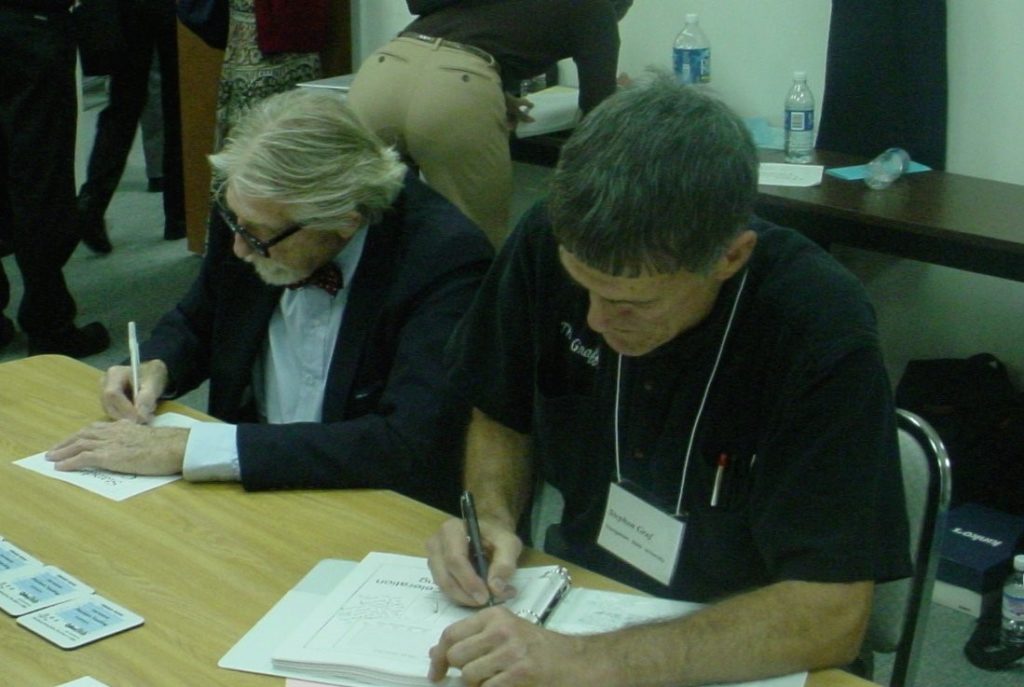Written by Rick Kubina
What powers Chartlytics? Precision Teaching. And where did Precision Teaching come from? Ogden R. Lindsley (1922-2004).
Before Og became the bow-tied, charming, creative force that brought the world amazing discoveries, he toiled away as an undergraduate and graduate student. But what a student! He earned his Bachelor’s and Master’s degree from Brown University and then went on to obtain his doctorate degree under none other than the most famous psychologist of the 20th century B. F. Skinner.
And if Skinner ranks as the most famous of his time, I vote Ogden Lindsley as number 2. Without Og, Chartlytics would not exist.

Figure 1: A picture of Og from New Orleans 2001
Ahead of his time
When people look back at visionaries and truly remarkable people, a common characteristic is they were ahead of their time. Og demonstrated again and again his technological contributions, ideas, practical applications, and foresight exceeded his contemporaries, and indeed the fields of psychology and education, by years.
For instance, Og’s Precision Teaching established daily progress monitoring. In Og’s words:
“From our point of view, the only measure of a good teacher or good methods or good schools is the performance, the daily performance of the children. Most teachers will tell you, ‘We do not have any measure of daily performance. It just would be impossible to measure the behavior of every child every day.’ Many teachers have been told that the way to measure a child’s performance is to give him a test. Tests are not measurements of a child’s performance —just a samples of it” (Lindsley, 1967, p. 9).
Og clearly differentiates testing from full-on performance monitoring. How do we know if behavior changes? Not from a test but from seeing the data each day. The variations (bounce) from one data point to the next in combination with a trend (celeration) paint the most accurate picture of behavior change we can hope to see.
Another forward concept of Og came to light when recognizing the dignity of all people. Back in the 1960s people with disabilities lived their lives in institutions or other sequestered places. But a label does not define a person. In 1964, 50 years ago, Og declared that children should not be labeled or blamed, but behavior science improved.
Throughout the history of Precision Teaching, the emphasis on changing behavior or what teachers can do to arrange instructional conditions to help students succeed, not labels like “mental retardation,” became a central focus. In 1964 Og was taking on labels and helping people pay attention to the most important part of behavior change – behavior.
In fact, Og’s words drove me as an undergrad to pursue Precision Teaching with my mentor, Steve Graf. The picture below shows Og and Steve signing their book in 2002; how I miss them both!

Figure 2: Ogden Lindsley and Steve Graf signing their book.
Og had many technological contributions. He gave the world the wrist counter, the “Lindsley operandum,” (a way to keep track of human behavior from moment-to-moment), and of course the Standard Celeration Chart.
I could go on demonstrating the professional and personal impact Ogden Lindsley had on so many. But for me, and now for Chartlytics, many of Og’s lessons will live on.
In the future, we will blog about our race to 1,000,000 performers. But once we get to 100,000 performers, Chartlytics (Dave and I) will set up a charitable trust in Og’s name. The money will go to fund students travel to conferences, pay for workshops, buy Precision Teaching materials for those in need, and support research. In our own way we hope to remain true to Og’s vision in helping create a better world with Precision Teaching and Standard Celeration Charting.
References
Lindsley, O. R. (1968). Theoretical basis of behavior modification. University of Kansas Bureau of Child Research.
Lindsley, O. R. (1964). Direct measurement and prosthesis of retarded behavior. Journal of Education, 147, 62-81.



